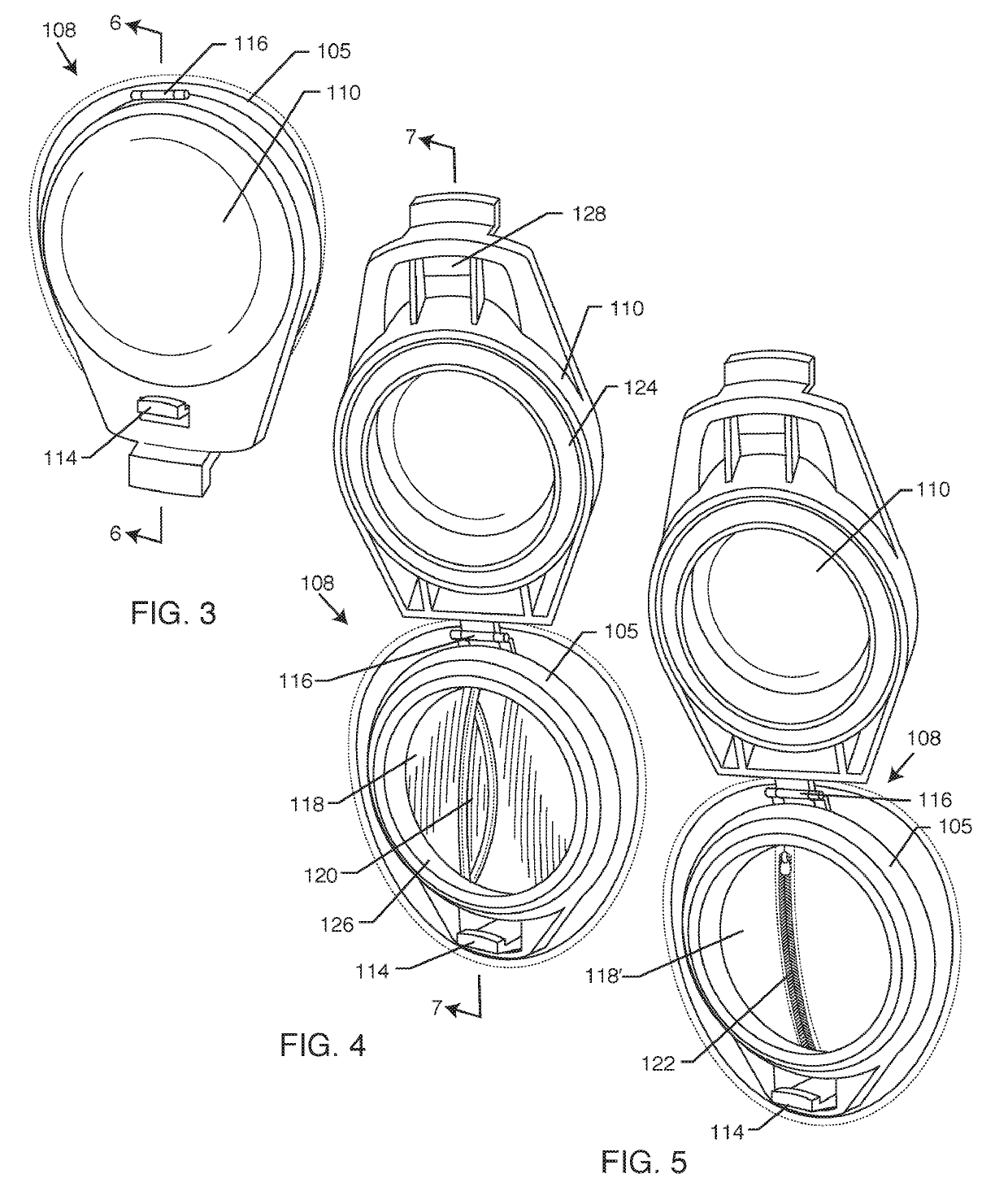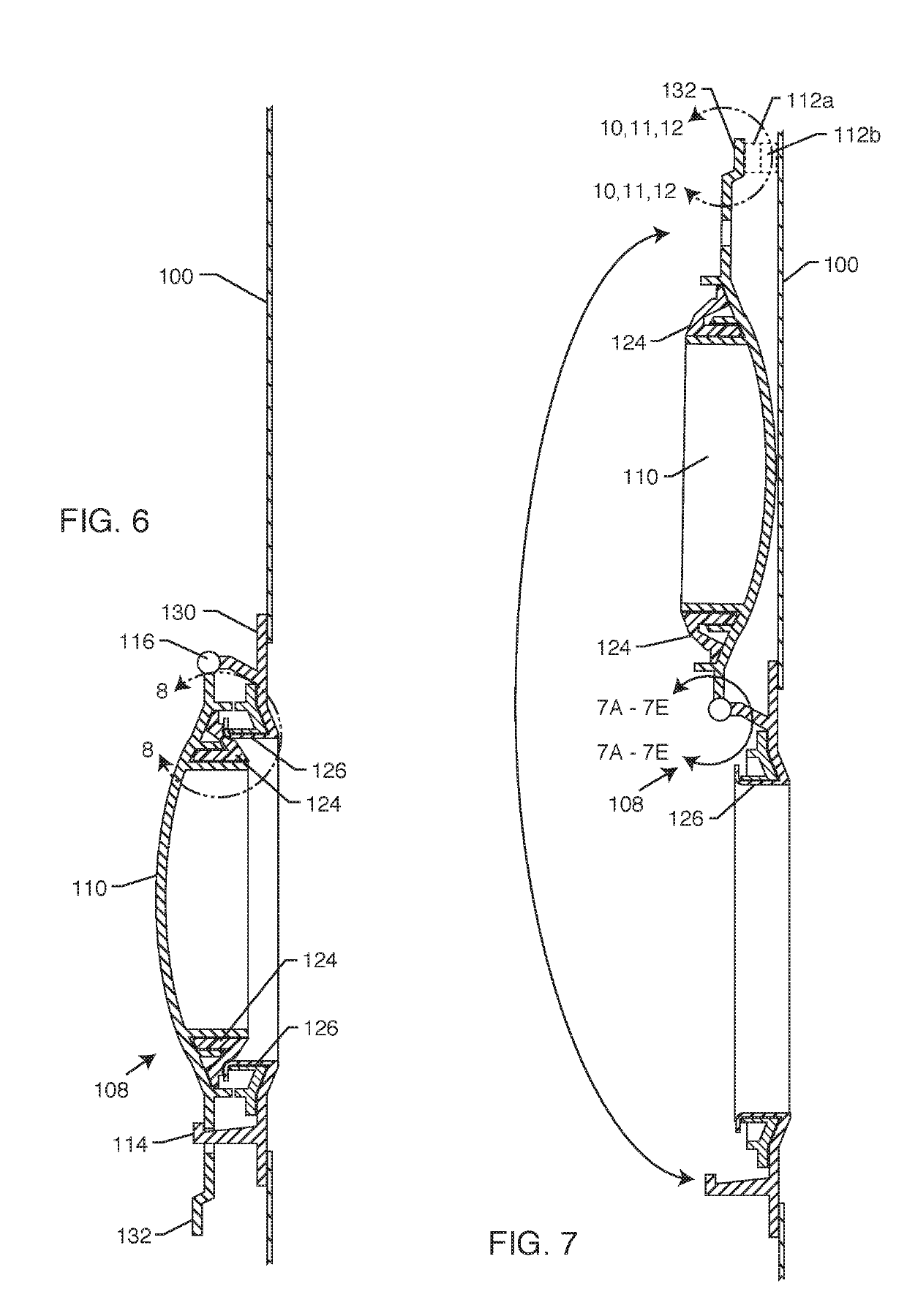Urination relief hatch for waterproof waders and foul weather gear
a technology for urinating relief and fishing waders, which is applied in the field of fishing waders, can solve the problems of laying on the muddy banks of rivers, affecting the urinal process,
- Summary
- Abstract
- Description
- Claims
- Application Information
AI Technical Summary
Benefits of technology
Problems solved by technology
Method used
Image
Examples
Embodiment Construction
[0145]FIG. 1 illustrates prior art chest waders 100. These are also equivalent to prior art rain gear. The chest wader 100 may be of rubber, various breathable membranes, such as Gortex® neoprene or any other fabric. In a wading application, a safety belt 102 is typically worn. This is a tightly or snugly fitting belt which prevents the rapid ingress of water into the lower part of the waders if one should, for example, slip into a deep pool in a river. The suspenders 104 are worn over the shoulders and keep the waders held up in place.
[0146]Referring once again to FIG. 1, the waders can actually include an entire family of similar garments. As defined herein, the term “wader” includes chest high waders, waste high waders, foul weather or rain suits, exposure suits, ice rescue suits, survival suits and water rescue dry suits. The term “wader” is also extendable to any type of scuba diving gear, whether they be wet or dry suits. In the broadest sense, the term “wader” as used herein ...
PUM
 Login to View More
Login to View More Abstract
Description
Claims
Application Information
 Login to View More
Login to View More - R&D
- Intellectual Property
- Life Sciences
- Materials
- Tech Scout
- Unparalleled Data Quality
- Higher Quality Content
- 60% Fewer Hallucinations
Browse by: Latest US Patents, China's latest patents, Technical Efficacy Thesaurus, Application Domain, Technology Topic, Popular Technical Reports.
© 2025 PatSnap. All rights reserved.Legal|Privacy policy|Modern Slavery Act Transparency Statement|Sitemap|About US| Contact US: help@patsnap.com



